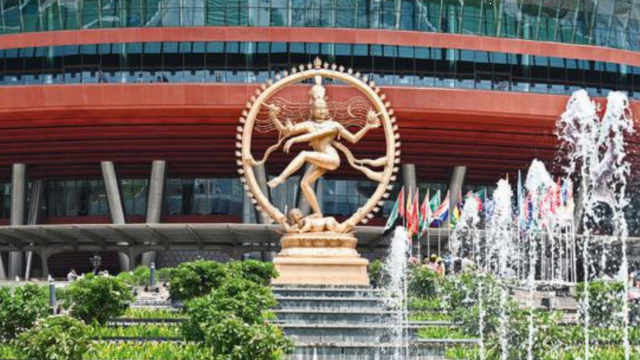World’s Tallest Nataraja Statue
A towering 27-foot Nataraja statue, the world’s tallest representation of Lord Shiva’s dancing form, will greet G20 leaders at New Delhi’s Pragati Maidan. This magnificent ashtadhatu (eight-metal alloy) sculpture, weighing 18 tonnes, was painstakingly crafted by sculptors from Swamimalai, Tamil Nadu. It draws inspiration from revered Nataraja idols found in Chidambaram, Konerirajapuram, and the Brihadeeswara Temple in Thanjavur, all originally constructed during the Chola dynasty’s zenith in the 9th-11th centuries AD. The Cholas, devoted Shaivites, left an indelible mark on Indian art, especially with their iconic Nataraja sculptures. This impressive work pays homage to Chola artistry and the intricate lost-wax casting technique.
Cholas’ Role in the Evolution of Shiva’s Portrayal
The Cholas played a pivotal role in shaping the iconic Nataraja sculpture, with the bronze version gaining significant cultural resonance.
Dual Aspects of Shiva’s Character
Lord Shiva, in his Nataraja form, embodies both creation and destruction, as he dances within a flaming halo. The deity is portrayed as both a destructive force, symbolizing death and time, and a protector who reassures and allays fear.
Lost-wax Casting Method
The lost-wax method, with a history dating back thousands of years, involves creating intricate metallic sculptures by casting molten metal into a hollow wax mold.
Challenges
The project took seven months and cost around Rs 10 crore due to its enormous scale. The challenge lay in creating such a massive sculpture using the traditional lost-wax method.
Month: Current Affairs - September, 2023
Category: Art & Culture Current Affairs








